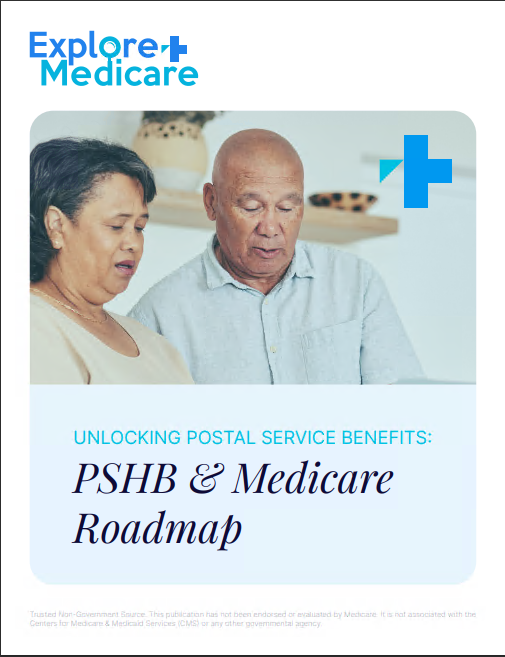Key Takeaways
-
Medicare may not cover all your healthcare needs in retirement. You should be prepared for deductibles, copayments, coinsurance, and out-of-pocket expenses.
-
Understanding the structure of Medicare Parts A, B, D, and the costs associated with each is essential for creating an accurate retirement budget.
Understanding Medicare’s Structure Before You Budget
When you’re planning your retirement, one of the most critical costs to prepare for is healthcare. And for most retirees in the United States, that means Medicare. But Medicare isn’t free. You’ll want to take a closer look at what you’re actually responsible for paying before finalizing your retirement budget.
Medicare is divided into multiple parts, each covering different aspects of your healthcare. These include:
-
Part A: Hospital Insurance
-
Part B: Medical Insurance
-
Part D: Prescription Drug Coverage
-
Medicare Advantage and Medigap: Offered by private insurers but not discussed here in detail due to restrictions
Knowing what each part covers—and more importantly, what it doesn’t—can help you avoid financial surprises later.
What You Pay for Medicare Part A
Most people don’t pay a premium for Part A if they or their spouse paid Medicare taxes for at least 40 quarters. However, that doesn’t mean there are no costs. You are still responsible for:
-
A deductible each benefit period (in 2025, it’s $1,676)
-
Coinsurance for inpatient stays beyond 60 days:
-
Days 61–90: $419 per day
-
Days 91 and beyond: $838 per day (lifetime reserve days)
-
-
Skilled nursing facility coinsurance after 20 days: $209.50 per day from days 21–100
These costs can quickly add up, especially if you experience a lengthy hospital stay or need skilled nursing care.
What You Pay for Medicare Part B
Part B is not premium-free, and almost every enrollee must pay for it. In 2025, the standard premium is $185 per month, though it may be higher based on your income. Additionally, you’re responsible for:
-
An annual deductible of $257
-
20% coinsurance for most outpatient services after meeting the deductible
These out-of-pocket costs can be significant, especially if you require frequent physician visits, physical therapy, or outpatient procedures.
What You Pay for Medicare Part D
Prescription drugs are not covered under Parts A or B, which is where Part D comes in. Even if you’re healthy now, planning for drug costs is wise. In 2025:
-
The maximum deductible is $590
-
After the deductible, you pay copays or coinsurance based on your specific plan structure
-
Once your out-of-pocket costs reach $2,000, your plan covers 100% of your covered medications for the rest of the year
This new $2,000 annual cap on drug expenses helps prevent excessive medication costs, but you’ll still need to plan for the upfront expenses.
The Costs Don’t End There
Medicare doesn’t cover every healthcare expense. You may face other out-of-pocket costs, such as:
-
Dental care: Cleanings, fillings, and dentures
-
Vision services: Eye exams, glasses, or contact lenses
-
Hearing aids and exams
-
Long-term care: Custodial care in a nursing home or assisted living facility
-
Overseas emergency care: Limited or no coverage
Many retirees assume Medicare is comprehensive, but it’s not. You’ll either need to budget for these expenses or explore supplemental insurance options that help reduce them.
How Much You Might Spend Annually
If you’re budgeting for a year in retirement, a rough estimate for Medicare-related expenses might look like this:
-
Part B premiums: $2,220 annually (based on $185/month)
-
Part D premiums and drug costs: Varies, but possibly $600–$2,000 annually depending on your medication needs
-
Deductibles and coinsurance: $1,000–$5,000 depending on service usage
-
Other uncovered services: $2,000–$4,000 annually
Altogether, you could be looking at $6,000 to $13,000 a year in Medicare-related costs. These are general ranges and your actual spending will depend on your health, income, and how often you use care.
Income-Based Adjustments You Need to Know
Medicare uses your income to determine whether you’ll pay more for Part B and Part D. This is called the Income-Related Monthly Adjustment Amount (IRMAA). If your Modified Adjusted Gross Income (MAGI) was above certain thresholds in 2023, you’ll pay more in 2025.
For example:
-
Individuals with income above $106,000
-
Couples filing jointly with income above $212,000
You’ll be notified by Social Security if IRMAA applies to you. These additional costs can raise your monthly Medicare premiums by several hundred dollars, so it’s important to factor them into your retirement planning.
What About Out-of-Pocket Maximums?
Unlike some private plans, traditional Medicare does not have an out-of-pocket maximum. This means there’s no annual cap on what you could pay if you have an expensive year of health issues.
That’s why some people consider additional coverage to help fill those gaps. But even with added insurance, you will still have:
-
Cost-sharing for certain services
-
Limits on covered services depending on the plan
Again, understanding these details will help you avoid surprises.
Budgeting for Healthcare in Retirement: Practical Steps
Here are a few practical steps to help you better prepare:
-
Start with your current health: Estimate how often you visit doctors or specialists, and any prescriptions you regularly take.
-
Review Medicare costs annually: Medicare updates costs every year, so adjust your budget each fall after new rates are announced.
-
Keep a healthcare emergency fund: Plan for at least one unexpected health issue each year that may lead to higher costs.
-
Plan for inflation: Healthcare costs generally rise faster than inflation, so build in an annual increase of 5% or more.
Timeline: When You’ll Start Paying for Medicare
Here’s how the timeline usually works:
-
Age 64: Start reviewing your Medicare options, especially if you’re planning to retire at 65
-
Age 65: Most people become eligible for Medicare
-
Your Initial Enrollment Period begins 3 months before your 65th birthday and ends 3 months after
-
If you enroll on time, your coverage starts the first day of your birthday month
-
-
Annually (October 15 – December 7): Medicare Open Enrollment—this is your opportunity to review and change plans or coverage for the following year
Missing enrollment deadlines may lead to late penalties or gaps in coverage, both of which can cost you more in the long run.
Planning for Long-Term Care Needs
Medicare doesn’t cover most long-term care services. This includes assistance with activities of daily living like bathing, eating, or dressing over an extended period. If long-term care is something you may need:
-
Start planning early: Look into long-term care insurance or alternative funding options
-
Include it in your financial plan: Costs can range from $50,000 to over $100,000 per year depending on the level of care and location
-
Understand Medicaid eligibility: You may qualify for assistance if your income and assets are below certain thresholds
Being realistic about the potential for long-term care can make your retirement plan more robust and resilient.
Medicare Costs Are a Core Part of Retirement Planning
As you prepare for retirement, it’s essential to recognize that Medicare alone won’t cover all your healthcare expenses. From monthly premiums to coinsurance, deductibles, and uncovered services, these costs can take up a significant portion of your retirement budget. Understanding what you’re likely to spend—and when—will help you retire with more confidence and fewer financial surprises.
If you’re unsure how to build Medicare costs into your retirement plan, speak with a licensed agent listed on this website for personalized advice tailored to your situation.









